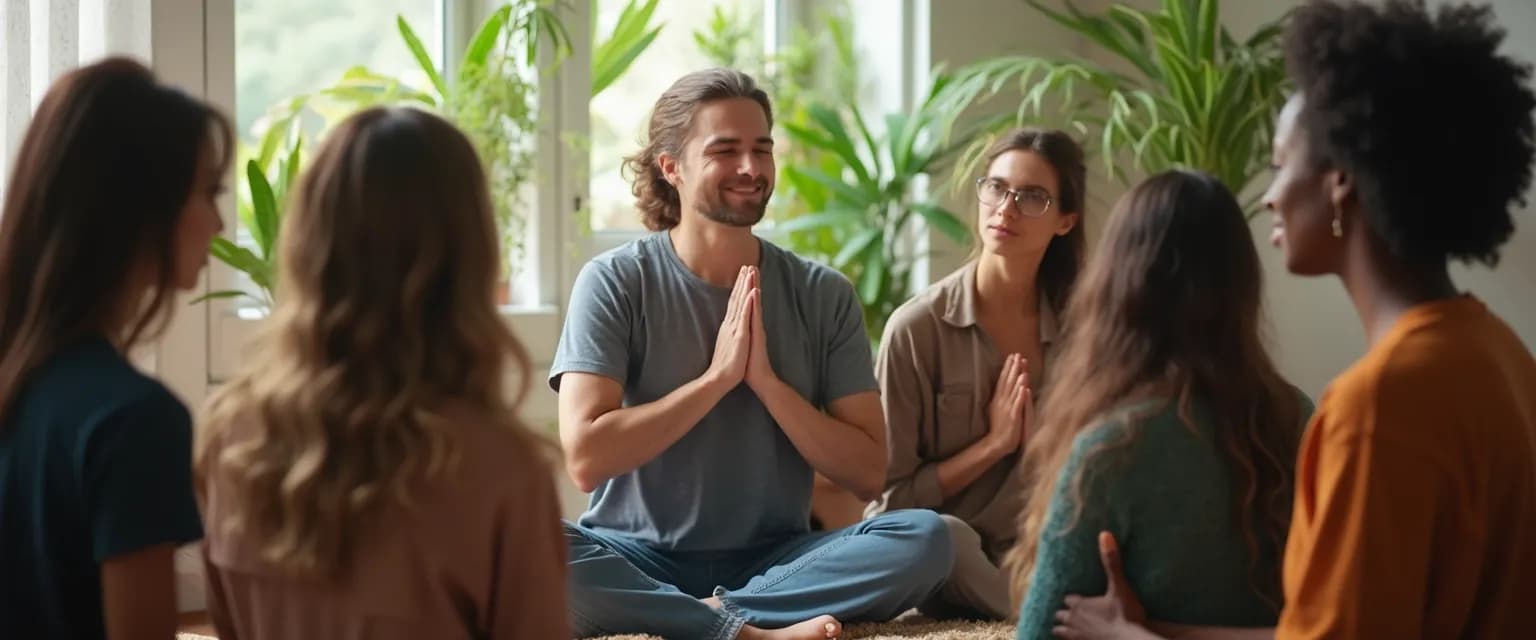5 Effective Grounding Techniques for Managing Anxiety in Community Organizing
The pressure of community organizing comes with unique emotional challenges. When decisions affect many people and their causes, anxiety in community organizing can feel overwhelming. Those heated strategy meetings, public speaking moments, and collective decision-making processes create the perfect storm for stress to build. Your racing thoughts, tightening chest, and second-guessing aren't just distractions—they're natural responses to high-stakes situations that can undermine your effectiveness as an organizer.
Research shows that anxiety in community organizing environments differs from everyday stress. The combination of personal values, group dynamics, and external pressures creates a distinct psychological experience. Scientists have found that grounding techniques—specific practices that connect you to the present moment—are particularly effective for managing uncertainty in activist spaces.
Let's explore five evidence-based grounding techniques specifically designed for the unique challenges of community organizing. These approaches help you stay centered when the pressure mounts, allowing you to contribute your best thinking when your cause needs it most.
Breathwork and Body Awareness: Foundations for Managing Anxiety in Community Organizing
When anxiety in community organizing situations peaks, your breathing often becomes shallow and rapid. The modified 4-7-8 technique works exceptionally well during tense meetings: inhale for 4 counts, hold for 2 (instead of the traditional 7, making it less noticeable), and exhale for 6 counts. This subtle breathing pattern activates your parasympathetic nervous system without drawing attention to yourself.
Body scanning offers another powerful approach to anxiety in community organizing settings. During discussions, take 30 seconds to mentally scan from your feet upward, noticing where you're holding tension. Are your shoulders creeping toward your ears? Jaw clenched? This awareness alone often triggers automatic relaxation.
For immediate grounding during intense moments, the 5-4-3-2-1 technique adapted for activist spaces works wonders. Silently identify 5 things you can see in the meeting space, 4 things you can touch (like your chair or notebook), 3 sounds you hear, 2 things you can smell, and 1 thing you can taste. This sensory awareness technique interrupts anxiety spirals by anchoring you in the present.
Physical grounding is equally effective—press your feet firmly into the floor while imagining roots growing downward. This simple practice creates bodily stability that translates to emotional steadiness, a crucial skill for navigating anxiety in community organizing environments.
Communication Strategies to Reduce Anxiety in Community Organizing Settings
Structured sharing formats dramatically reduce anxiety in community organizing discussions. The "round robin" approach, where each person speaks briefly in turn, eliminates the pressure of interrupting or being overlooked. As a facilitator, introducing this structure with phrases like "Let's hear one thought from each person" creates psychological safety.
Verbal anchoring techniques help manage collective anxiety. When tensions rise, naming what's happening with statements like "I notice we're moving quickly through some complex issues" acts as a group-wide grounding tool. This speaking confidence technique validates shared experiences and creates space for recalibration.
Creating communication agreements specifically addressing anxiety in community organizing prevents many triggers before they occur. Simple agreements like "We'll take a two-minute breather when discussions get heated" build emotional regulation into your group's culture.
Implementing Grounding Techniques to Transform Anxiety in Community Organizing
Integrating these techniques into existing organizing structures requires intentionality. Start meetings with a 30-second grounding practice, normalizing emotional regulation as part of your group's process. During planning sessions, identify potential high-stress decision points and assign a team member to suggest appropriate grounding techniques when needed.
Learning to recognize when specific grounding methods are most effective transforms how you handle anxiety in community organizing. Body awareness practices work best for catching anxiety early, while structured communication techniques help when group tension has already escalated.
Building a culture that acknowledges anxiety in community organizing isn't just compassionate—it's strategic. When groups normalize these experiences and provide practical tools for managing them, decision-making improves and burnout decreases. Start by introducing one technique at your next meeting, then gradually expand your collective toolkit.
Remember that managing anxiety in community organizing is an ongoing practice, not a one-time solution. These five grounding techniques offer a foundation for more sustainable activism that honors both your cause and your wellbeing. By addressing the emotional dimensions of organizing work, you'll create spaces where clearer thinking and more effective action become possible.




